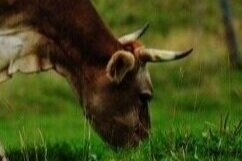Part 3 of 3: Tips on How to Select a Rug
KNOW YOUR FIBERS & WEAVES.
FIBERS!
Wool is our favorite and we feel strongly that it is worth the investment. Wool is the most common fiber used in rug construction. It’s durable, affordable, soft, and naturally stain resistant. In tufted constructions, wool rugs are prone to shedding, and may require regular vacuuming. Not up for weekly vacuum sessions? A looped-fiber rug essentially hides the tops of the fibers, resulting in less wear and tear and far less shedding.
Synthetic yarns have come a long way! Any more, you have to get down on your hands and knees, and actually flip over the rug to determine its material. Polypropylene, polyester, and viscose are often used. The benefits of synthetic fibers are many: superior stain blocking, easy care, and resistance to fading. They tend to be the ideal choice for functional areas like entryways, hallways, or patios. This material can give the client a more cost effective alternative to a true silk rug.
Natural-fiber rugs are created from materials like jute, sisal, bamboo and sea grass. They are eco-friendly and among the most affordable yarns. Jute and sisal can possess a scratchy texture that can feel rough underfoot, while sea grass and bamboo are smoother. Natural fiber rugs work best in dry rooms where there is low likelihood they will be stained, as they can be difficult to clean. They can have an off-gassing of a smell. This is not our first choice, but some don’t mind it. Smell it before you keep it!
Can you say luxury? Among the best quality along with Wool, Silk rugs are a luxurious choice, offering natural sheen and softness that makes them perfect for the bedroom. They are however, more delicate than wool and cotton versions, sensitive to moisture, and generally more expensive than other materials.










